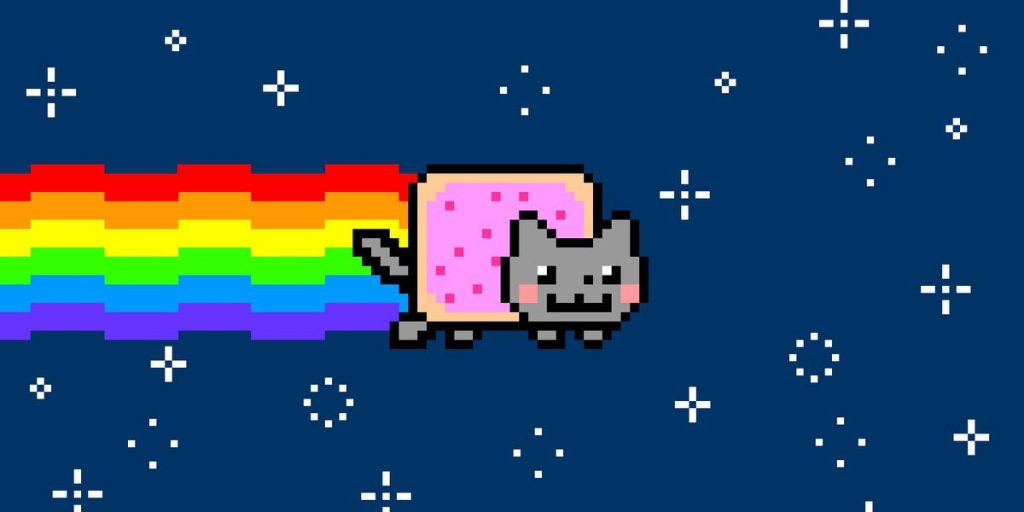Words by Lewis Empson
If you’ve been on Twitter as of late and follow anyone from tech experts, digital artists or even┬áParis Hilton, you’ve probably seen the hype surrounding “NFTs”. This is all well and good and it’s awesome to see a huge new tech community trendÔǪ but what even is an NFT? This is something I have pondered whilst endlessly scrolling through the countless crypto currency laden tweet threads trying to figure out what all this BTC and NFT means exactly.┬á
To understand NFTs or “Non Fungible Tokens”, we first must understand in economic terms, what is fungible? Fungible refers to an asset that retains value once exchanged with goods of the same type – for example exchanging two 50 pence coins for a single 1 pound coin. Non-fungible refers to the opposite of this, an asset that is completely unique in value – think like a classical painting but now in the digital realm. Art is where this comparison is most understandable; there may be prints, photographs and copies – but Da Vinci’s Mona Lisa will always be the original and will therefore hold that unique value.
So how does this relate to digital art? It’s all about replicability; digital art files can be duplicated, “screenshotted” or copied very easily and convincingly unlike “IRL art” which can be more difficult to duplicate. Here is where we reach the “token” aspect of NFTs. Digital art can be marked with a certificate to ensure its authenticity, making the originals distinguishable from duplicates and, therefore, valuable. These tokens mark ownership of an original piece and can be bought and sold as valuable digital assets that will fluctuate in value, making them an instant target of the recent boom in crypto currency and the whole Gamestonks incident in which everyone on Twitter and Reddit decided that they were the next Jordan Belfort.
Ok, so now we understand what an NFT is, why have they become so popular? As mentioned before, they are a form of digital investment and, amid this new crypto boom, provide alternative methods of investment other than the likes of Bitcoin otherwise known as BTC. With BTC, the value of the currency is what it is reflected in a volatile and shifting market, whereas NFTs can function more like a traditional auction based system. This makes them a potentially more stable investment, although this remains to be seen in the long run as we’re very early on in the NFT lifestyle. Crypto currency as a whole has been frankly borderline radioactive in terms of stability so there’s no telling as to how NFTs will continue. Although NFTs do have one invaluable asset to boost their successÔǪ
Internet hype has been the key to success for NFTs, whether its prominent digital artists like BossLogic hopping on the trend, gifs of classic internet memes like Nyan Cat selling for almost $600,000, or online personalities (for better or worse) like Elon Musk who has a cult-like meme fan bases that will hype up anything that he promotes – all of these amount to huge online exposure and interest generating this market; selling memes practically sells itself. Although, like all internet trends, there has to be a moment in which this fad flickers out; well hypothetically. Who knows, this could be the future marketplace of art and creativity with it not being restricted to just art but also videos and music.

It truly embraces the nature of modern digital creativity and gives a legitimate platform to digital artists that may have relied exclusively on commission work beforehand and were used to having their creations stolen and distributed without credit or, more importantly, payment. It’s the classic trope of digital artists being taken advantage of by customers who don’t want to pay because it’s “not real art”, and having to rely on watermarks and the good will of people on the internet (not sure if that exists) for their work not to be plagiarised or appropriated without consent or royalties.┬á
So although NFTs may be confusing (like how do you own art that doesn’t technically exist?) and volatile (but so are all investments – especially crypto currency), they do provide a way to regulate and classify digital art in a way that can benefit the artist as well as provide a new angle on the crypto investment craze. I’m not sure how long either will last and I’m certainly steering clear, mostly due to the fact that even after writing this I’m not 100% sure if I get it, so I’ll sit this one out.┬á
If you’re interested in how NFTs are shaking up the music scene then check out Quench Music’s follow up article!
Instagram: @quenchdownload
Write for us: email – technology@quenchmag.co.uk or join the Facebook contributor group
Check out our other articles here


